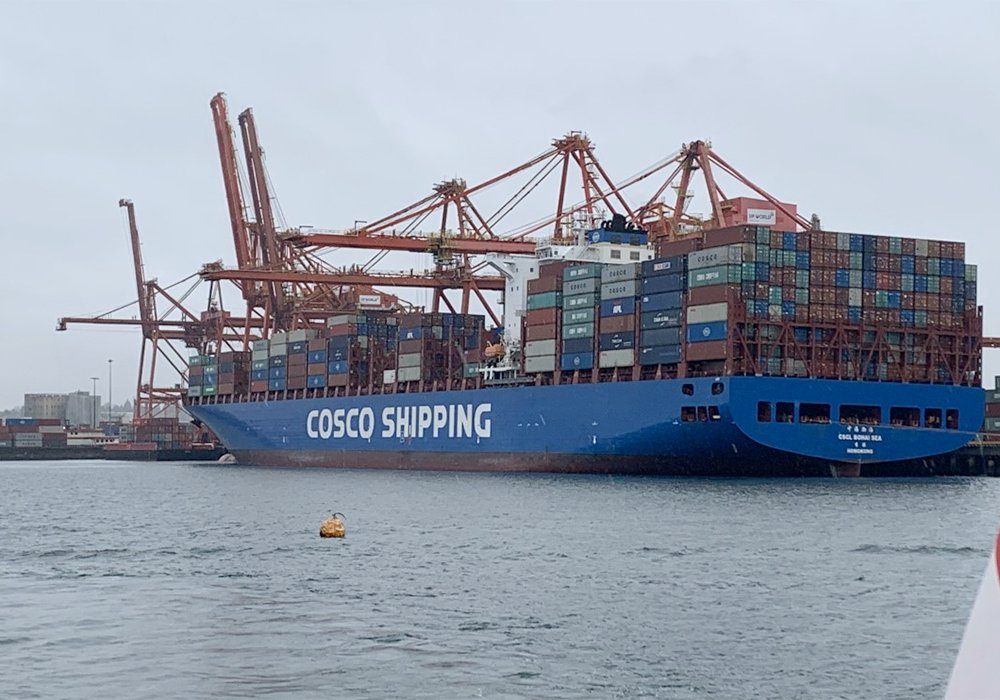Buyers’ faith in global supply chains has been undermined

U.S. grain company manager Seth Post has good vibrations for crop prices.
Post, who works for CBG Enterprises, told the Kansas City Federal Reserve Bank’s annual agricultural economics conference that the bull market in crop prices probably has lots of time to run because any crop production problem this summer will just encourage crop buyers and users to buy more to ensure their stocks are sufficient to handle a true shock.
His noting of stockpiling behaviour among anxious buyers was a common theme of the two-day conference.
The pandemic and the run-up in prices — neither phenomenon anticipated by anybody — has rattled buyers and they’re likely to move any time they fear their ability to operate could be imperilled by lack of supplies.
That’s a significant part of today’s crop market, which is why even great crops in some regions probably won’t be enough to pop prices as long as somebody somewhere is having challenges.
But it’s a deeper cultural issue too, methinks, running well beyond medium-term processors’ concerns. All across the world, people are reconsidering their vulnerability to shocks and their ability to adjust, or even stay in business.
We’ve talked lots about the ending of the age of ever-greater free trade and rules-based trade, but much less about the end of “lean” manufacturing and lean supply chains.
With so many damaging threats piling up in the last five years, including trade wars and agriculture trade being weaponized in geopolitical issues, the faith in the ability of the world’ supply chains to operate without interruption and on razor-thin margins has been seriously undermined.
Last week, I wrote about the surprising resilience of Canada’s food industry during the pandemic, and the interesting observation of one study that the high efficiency of the industry could be the source of that resilience. High-functioning industries and businesses are able to switch, pivot and adjust better than many might expect because they are operating at an already high level of competence.
Rather than relying upon excess capacity to soak up shocks, they rely upon that competence to adapt quickly.
At the same time, some resilience is being built into parts of the food and farming industry by the establishment of excess capacity.
As Heidi Schweizer of North Carolina State University observed, there has been a move away from “just-in-time” inventory management and toward “just-in-case” management for a few years, but COVID-19 has quickened the change. That isn’t a manifestation of lazy management, as it might have been seen five years ago, but conscious management of perceived risks of today’s environment.
Post said farmers are taking control of more parts of their own supply chains, by building on-farm storage and buying semi-trucks to haul their own crops. That’s another form of building extra, rather than excess, capacity.
That’s something western Canadian farmers have done for years. Farmers north of the border have built enormous amounts of on-farm storage, which allows them to make more choices on when to move and price crops. It also helps with Canada’s frequently clogged grain transportation system.
It’s an added cost, compared to the very low costs some U.S. and Australian producers have traditionally had, but it’s a form of efficiency, even if it’s not in a “usually cheapest way” sort of efficiency.
When the shocks and disruptions come often enough, as they do in prairie farming, being prepared is necessary for long-termpared is efficient to long-term survival. It’s the sort of thinking behind most farmers’ commitment to rotations, beyond the agronomic advantages. It’s why many farmers bought their own sprayers, after finding out the custom guy wasn’t always available when your flea beetles were out.
You can’t assume things will go well.
How will western Canadian farmers respond over the long term to the current series of shocks, challenges and opportunities? That’ll be interesting to watch.
Without question, farmers will increase their efficiency, as they always do. But as with today’s adjustments in the farm and food industries, efficiency can come in many different forms.
Source: producer.com

